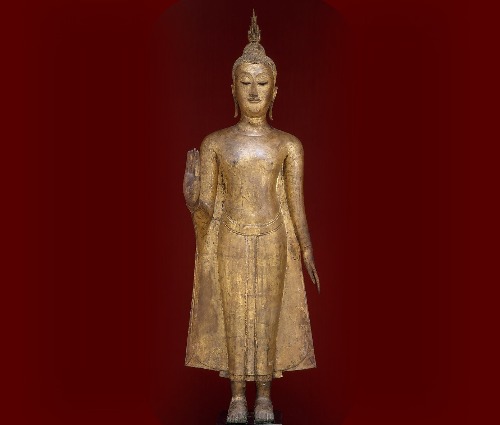
The Noble Eightfold Path to the End of Dissatisfaction
Talks on the Buddha’s instructions for individual and collective liberation.
with Sean Feit Oakes, PhD
namo tassa bhagavato arahato sammāsambuddhasa
Homage to the blessed, accomplished, and fully self-awakened one.
“Bhikkhus, just as the river Ganges slants, slopes, and inclines towards the east, so too a bhikkhu who develops and cultivates the Noble Eightfold Path slants, slopes, and inclines towards Nibbāna.
“And how, bhikkhus, does a bhikkhu develop and cultivate the Noble Eightfold Path so that [they slant, slope, and incline] towards Nibbāna? Here, bhikkhus, a bhikkhu develops right view, which is based upon seclusion, dispassion, and cessation, maturing in release…. They develop right intention… right speech… right action… right livelihood… right effort… right mindfulness… [and] right concentration, which is based upon seclusion, dispassion, and cessation, maturing in release. It is in this way, bhikkhus, that a bhikkhu develops and cultivates the Noble Eightfold Path so that [they slant, slope, and incline] towards Nibbāna.” (SN 45.91)
About the course
This course is a compilation of audio recordings of meditations and talks, given over a two year long deep dive into the Eightfold Path in our weekly sitting group, Insight Meditation Satsang. This audio archive of Dharma study is organized as a course for your ease, and includes written overviews of each talk as well as links to further study. The course is still in progress. The final limbs are being taught live and will be added as they are recorded (through roughly Spring of 2021). You are always welcome to join us live, if you would like, every Tuesday at 7:30pm Pacific time.
Registration includes lifetime access to the course and is offered freely, in the spirit of Gift Economy. If you are able to do so, contributions are greatly appreciated and will support the continuation of offerings like this. You can learn more about Gift Economy and make a contribution here.
Welcome!
Navigating through the course
At the bottom of this page, and throughout the course in the sidebar, you’ll find a menu that lists the course in sections. Within each section there are several classes, each of which includes a meditation and talk, generally given on the same night. Often the meditation and talk are related, with the guided practice weaving into the subject of the talk. If you click the “next class” button at the bottom of each page, it will mark it complete so you can keep track of where you are in the sequence.
The group is a drop-in gathering, so I give beginner-friendly meditation instructions often, and within the talks I repeat important lists and teachings many times. You don’t have to memorize things immediately or try to hold on to anything. Just let the Dhamma soak in, and you’ll hear all the important lists and concepts many times.
Asking questions
If you have questions about practice at any point in the course, please join us in our Facebook group, In It To End It, where you can ask questions, connect with a warm community of practitioners, and join live gatherings. If you have specific questions about a talk in this course, consider writing it as a comment at the bottom of the page for that talk, and Sean will answer it here. Your question, and the answer, may be helpful for others.
Chants to support your practice
Every week at Satsang, we do a short chanting ceremony called a pūjā, or devotional ritual. We chant a few ancient verses in Pāli, the language of the early Buddhist texts. These verses are excerpts from a longer sequence of chants done daily in Theravāda monasteries, emphasizing the basic lay (non-monastic) practices of going for refuge and the five ethical precepts.
The verses we chant praise the “Triple Gem” of Buddha, Dhamma, and Saṅgha, pay homage to the Buddha, renew our practice of Taking Refuge in the Triple Gem, and renew our commitment to the ethical practices known as the Five Lay Precepts. The pūja ends with a short verse in English known as the Five Recollections. You can read more about the chants here.
